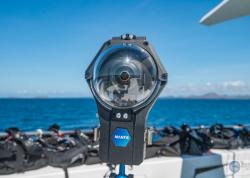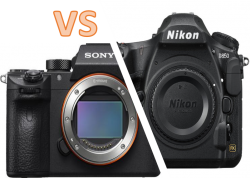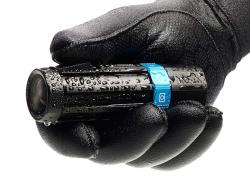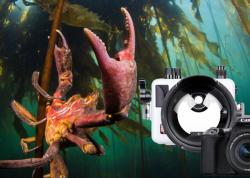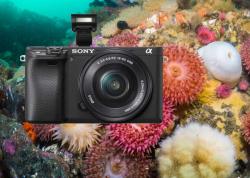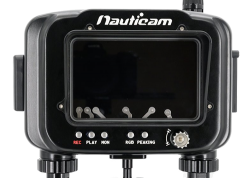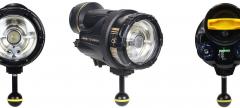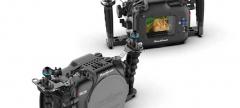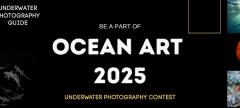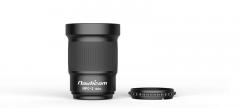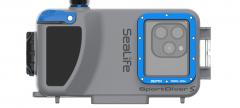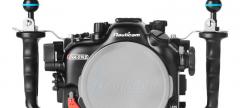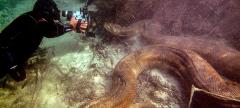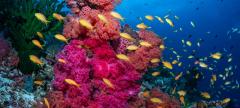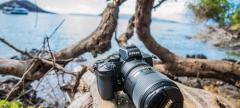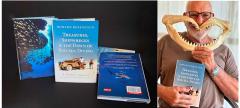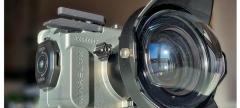Marelux Apollo III Underwater Strobe Review
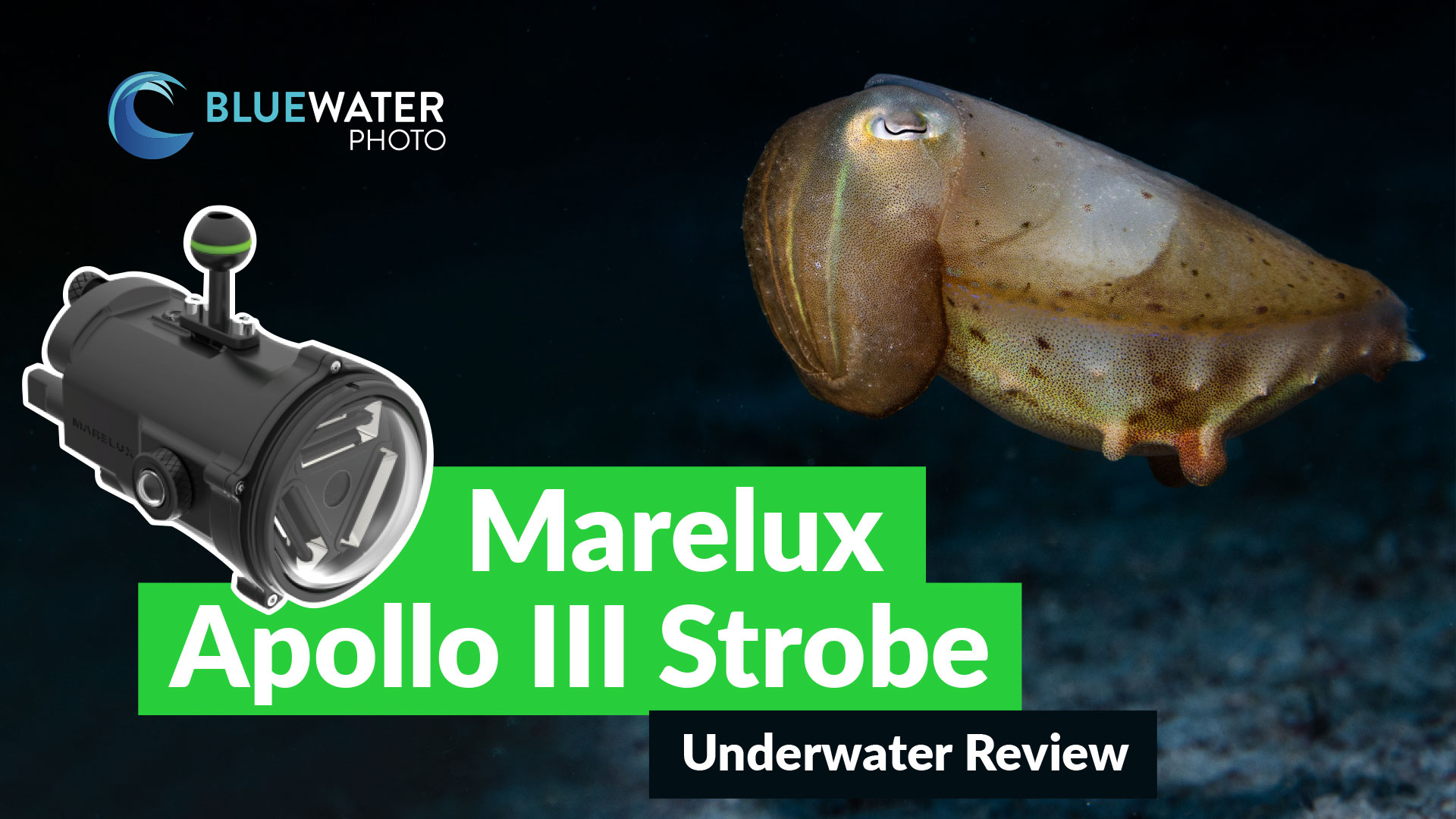
The Apollo III is the newest underwater tech from Marelux that seems to defy gravity. It just might be the world's highest performing strobe. The strobe features a guide number of 44, a recycle time of 0.6 seconds at full power, wireless triggering compatibility, red & white modeling lights, and more strobe modes than any on the market. These include TTL (automatic strobe power), HSS (high-speed sync for higher shutter speeds), RC TTL (more accurate TTL for Olympus cameras), MTL (multiple strobe flashes), and manual strobe control. With so much capability, underwater photographers finally have a lighting tool without compromise. Fortunately, we were the first to take the Marelux Apollo IIIs diving in Bohol, Philippines at Magic Oceans Dive Resort with beautiful coral walls and unique critters. The Apollo III's didn't dissapoint and they won't be leaving my camera bag anytime soon!
US MSRP: $1199 at Bluewater Photo

Support our content and purchase your Marelux Apollo III and Lumilink 2.0 Wireless Transmitter at Bluewater Photo:
Recommended Batteries: Three 18650H batteries at Bluewater Photo
Book at trip to Magic Oceans in Bohol Philippines with Bluewater Travel
Marelux Apollo III Specifications
- Guide number of 44
- 0.6 second recycle time at full power
- Beam angle of 110 degrees (140 degrees with dome diffuser)
- Color temperature of 6200K, 5500K with dome diffuser
- Battery life: 1000 flashes at full power
- Lifespan: Over 1 million flashes
- TTL, RC TTL, MTL (continuous flash mode) and HSS (high speed sync)
- Wireless signal sensor compatible with Lumilink 2.0 (two fisheye ports)
- Fiber optic compatibility
- Dimensions: 90mm D X 150mm L X 77mm W
- Batteries: 3x 18650H batteries
- Weight in water: 115 grams
- Aimin lights: one 250 lumen white and 300 lumen red
- Depth rating: 100m
- Dome diffuser included

Marelux Apollo III Key Features
High Output for All Lighting Conditions
The Marelux Apollo III is an incredibly powerful strobe with an underwater guide number of 44. For years, a guide number of 33 was typical for professional, pro-grade wide angle strobes. This was often limited by the capacity of AA batteries common in many strobe models. With 18650 lithium ion batteries, the Apollo IIIs have more potential for higher output and quicker recycle times. With a GN of 44, you're seeing a 25-30% increase in power which is especially beneficial for wide angle photography. Although it's a counterintuitive concept, when taking wide-angle photos, it's necessary for your strobe to output as much light as the ambient light. So if you are in shallow, clear tropical water, you need a lot of strobe power to counteract the ambient light. The Apollo IIIs are more than enough power for almost any lighting situation - even large dark subjects (like sea lions) in shallow afternoon sunlight.

The World's Fastest Recycle Times
When you're comparing the Apollo III to other strobes on the market, it's important to look at the recycle time at full power - not 1/8th power, for example. Lately, it's been disappointing to see recent strobe releases from other brands falsely marketed as having high output and quick recycle times - when in reality these flashes only have a quick recycle time at low output. Some recent "high power" flashes even have a recycle time at full power as long as two seconds! The Apollo III doesn't compromise. At a full power GN of 44, the recycle time is an incredible 0.6 seconds. At that speed, you can burst shoot at just about full power with consistent exposures between frames. Because the strobe is so powerful, often I felt like I only needed half power and below - in which case 10-30fps burst shooting is easily attainable. So if you're an action photographer looking for sea lions, sharks, and dolphins - this strobe should be at the top of your list. During our dives in the Philippines, the Apollo IIIs almost felt a little overkill for the situation as most subjects are slow-moving.

Limitless Battery Life
The battery life of the Marelux Apollo IIIs is (almost) limitless. At 1000 full power flashes, I got two full days of shooting in Bohol out of a single set of batteries. That's eight dives, constantly shooting photos in wide-angle and macro situations. In many cases, taking more than 1000 shots on a set of batteries is possible because most shooting situations don't require full power bursts. The Apollo III is powered by three 18650H batteries. It's important to order the right type of 18650 batteries at Bluewater Photo.

Wireless and Fiber Optic Triggering
At DEMA in 2023, we were excited to see a novel technology introduced alongside the Apollo IIIs - wireless strobe triggering. Marelux has designed a Lumilink 2.0 optical trigger which can trigger the strobes without the need for sync cords or fiber optic cables! We attached this device to our Marelux Z8 housing directly and tested it thoroughly. The lumilink 2.0 senses your flash trigger in your housing and emits a blue light that can travel up to a meter in the water to trigger your strobes. It can be a freeing experience shooting without cables and works pretty well in practice. I found that I could quickly fire my strobes at burst speeds similar to what I would be able to trigger with fiber optic cables. It limits the ability to use TTL, but it might just be worth it to not have cumbersome cables or cable issues while shooting. That said, I did notice some strobe positions blocked the receiver port on the strobe from "seeing" the lumlink and they had difficulty firing.

The Perfect Beam
A "good beam quality" is often a subjective measure. So what makes a "good beam"? In addition to output and recycle time it's important to consider color temperature, beam angle, and distribution. When it comes to beam angle, I found in my underwater tests it was easy to shoot the Apollo III's without dome diffusers. I personally like the 110 degree beam angle as it's a great angle for creating shadows that can produce dramatic lighting. So I made the decision to take off the diffusers - which extend the beam angle to 140 degrees. For photographers shooting quick and reflective subjects like sharks, a Marelux dome diffuser can reduce glare and help you hit the subject.
Another reason that diffusers aren't necessarily necessary is the construction of the flash tubes. The Apollo IIIs are the first strobes to feature a triangular "triple flash tube". This design creates an even distribution of light with no hot spots. Some might argue that it's even more effective than a circular flash tube.
But perhaps the most overlooked quality of a strobe beam is the color temperature. At 6200K, the Apollo IIIs have a color temperature fairly similar to daylight - resulting in accurate colors of critters and reef scenes. With the Apollo III dome diffusers, the color temperature warms up to 5500K. This can be a good option for wide angle photography where a warmer beam can be corrected in lightroom resulting a cooler, bluer background.
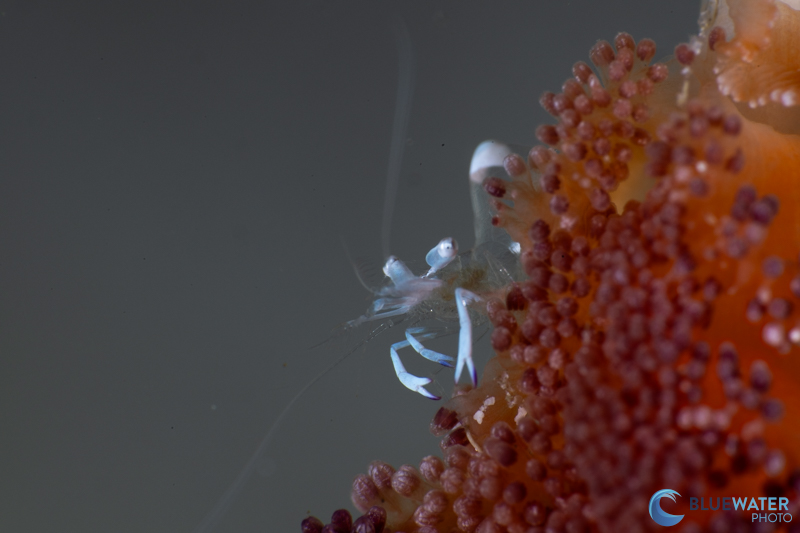
TTL, RC, HSS, and MTL Compatible
The Marelux Apollo III's are designed with the most strobe modes on the market. They feature a TTL mode which allows your camera to tell the strobe what power to fire without needing you to adjust it yourself. The RC TTL mode produces more accurate exposures with Olympus cameras. If you are interested in shooting TTL or RC mode, make sure you reach out to the knowledgeable staff at Bluewater Photo for recommendations on the best trigger.
In addition to TTL, the strobes have a manual mode that allows you to manually control the strobe power using the right power dial on the strobe. The HSS mode gives you the ability to sync your strobes at a shutter speed higher than your camera's flash sync speed. However, it's important to note that in this mode your flash exposure will be effected by your shutter speed. And finally, the Apollo IIIs have a continuous flash mode (MTL) which allows you to capture unique compositions when firing with a slow shutter speed.
Size and Construction
When considering a high power strobe, size can be a limiting factor for many divers who might be looking for something a little more "travel friendly." For a high output of GN44 the Apollo IIIs are fairly compact, but still large strobes, weighing in at 960 grams (2.12 lbs). The strobes do come with a neoprene cover that allow it to weight 115 grams in the water. This makes them pretty manageable, but we still recommend floats when using them.
The Apollo III's are constructed with a durable anodized aluminum body that can come in multiple custom colors including Yale Blue, Olive Green, Burgundy, and Silver. The controls are easy to use even in cold water with big gloves. They knobs are large and jut out farther from the strobe panel than other strobes.
Conclusions
The Marelux Apollo IIIs are uncompromising and just might be the world's highest performing strobes. You won't find a high GN strobe that can shoot as fast for as long anywhere. The triangular flash tube design produces a beautiful beam reflected in both our macro and wide angle underwater photos. But more importantly, they were a pleasure to shoot with. The Apollo IIIs truly opened up a new world of artistic opportunity for me. With no other strobe combination have I been able to capture photos in such shallow, clear water at speeds that can keep up with the quickest of subjects.

RECOMMENDED ARTICLES
SUPPORT THE UNDERWATER PHOTOGRAPHY GUIDE:
The Best Service & Prices on u/w Photo Gear
 Visit Bluewater Photo & Video for all your underwater photography and video gear. Click, or call the team at (310) 633-5052 for expert advice!
Visit Bluewater Photo & Video for all your underwater photography and video gear. Click, or call the team at (310) 633-5052 for expert advice!
The Best Pricing, Service & Expert Advice to Book your Dive Trips
 Bluewater Travel is your full-service scuba travel agency. Let our expert advisers plan and book your next dive vacation. Run by divers, for divers.
Bluewater Travel is your full-service scuba travel agency. Let our expert advisers plan and book your next dive vacation. Run by divers, for divers.




